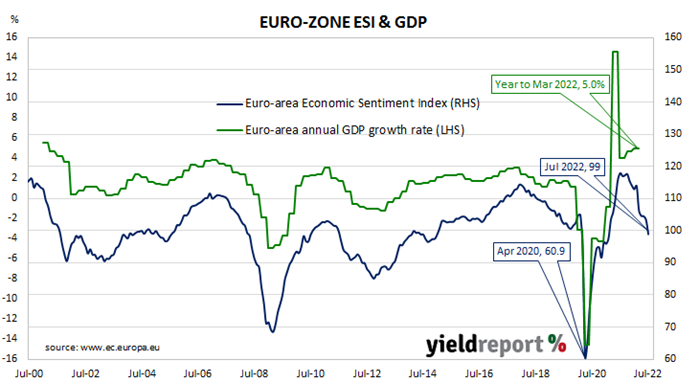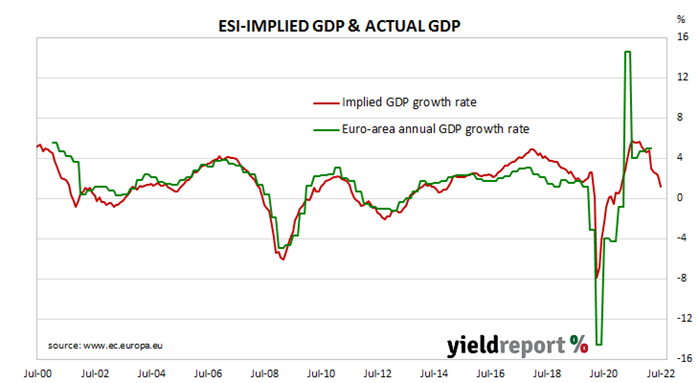Summary: Euro-zone composite sentiment index down in July; below expectations; readings down in all five sectors; down in all four large economies; German, French 10-year yields materially lower; index implies annual GDP growth of 1.2%.
The European Commission’s Economic Sentiment Indicator (ESI) is a composite index comprising five differently weighted sectoral confidence indicators. It is heavily weighted towards confidence surveys from the business sector, with the consumer confidence sub-index only accounting for 20% of the ESI. However, it has a good relationship with euro-zone GDP, although not as a leading indicator.
The ESI posted a reading of 99.0 in July, below the consensus expectation of 101.0 as well as June’s revised reading of 103.5. The average reading since 1985 is approximately 100.
German and French 10-year bond yields finished the day markedly lower. By the close of business, both had shed 14bps to 0.81% and 1.38% respectively.
Confidence deteriorated in all five sectors of the economy. On a geographical basis, the ESI declined in all the euro-zone’s four largest economies.
End-of-quarter ESI readings and annual euro-zone GDP growth rates are highly correlated. This latest reading corresponds to a year-to-July GDP growth rate of 1.2%, down from June’s implied growth rate of 2.3% after revisions.



